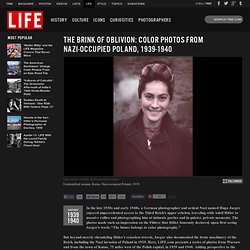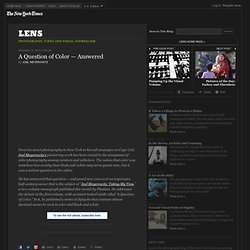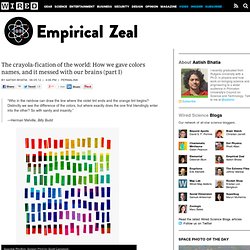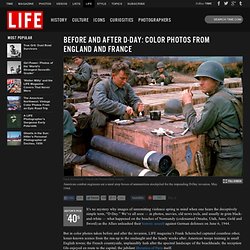

Archivio Luigi Ghirri. Questo è il mio primo lavoro con struttura precisa ed articolata, segna un momento importante perché è proprio da questa attenzione su di una realtà di secondo grado, che partono e si svilupperanno molti dei lavori successivi.

Nella serie si possono chiaramente individuare articolazioni precise: la donna, l’uomo, la coppia, i bambini, gli animali, i rituali, il mondo della cultura, i personaggi celebri, il paesaggio, la natura. L’attenzione alla distruzione dell’esperienza diretta nasce in questo lavoro, che non vuole dirci di invadenze delle immagini negli ambienti di vita, quanto piuttosto porsi come analisi tra il vero e il falso tra quello che siamo e l’immagine di quello che dobbiamo essere, operare una lettura nell’occultamento e nella negazione del vero.
Colour Theory. CAROL MAVOR - Home. Fred Herzog. Tony Ray-Jones. Kodachrome. The stories behind Juergen Teller's best shots. Elliott Erwitt, Coloring Outside the Lines. Early Colour. HELMUT NEWTON: “COLOR” ANTOINE D’AGATA. Wim Wenders. The Execution of Lady Jane Grey. Lady Jane Grey was Queen of England for just 9 days until she was driven from the throne and sent to the Tower of London to be executed.

Jane became queen after the death of her cousin, Edward VI in 1553. As a Protestant, Jane was crowned queen in a bid to shore up Protestantism and keep Catholic influence at bay. The plan didn't work. Jane's claim to the crown was much weaker than Edward VI's half sister Mary. Mary, a Catholic, had popular support and soon replaced Jane as queen. Lady Jane Grey was executed at Tower Green on 12 February 1554.
The Brink of Oblivion: Inside Nazi-Occupied Poland, 1939-1940. In the late 1930s and early 1940s, a German photographer and ardent Nazi named Hugo Jaeger enjoyed unprecedented access to the Third Reich’s upper echelon, traveling with Adolf Hitler to massive rallies and photographing him at intimate parties and in quieter, private moments.

The photos made such an impression on the Führer that Hitler famously declared, upon first seeing Jaeger’s work: “The future belongs to color photography.” Home : I BARELY REMEMBER _____________ Joel Meyerowitz Black and White in Color. From his street photography in New York to his soft seascapes on Cape Cod, Joel Meyerowitz’s pioneering work has been crucial to the acceptance of color photography among curators and collectors.

The notion that color was somehow less worthy than black-and-white may seem quaint now, but it was a serious question in the 1960s. He has answered that question — and posed new ones over an impressive half-century career that is the subject of “Joel Meyerowitz: Taking My Time,” a two-volume monograph published this month by Phaidon. He addresses the debate in the first volume, with an insert tucked inside titled “A Question of Color.”
In it, he published a series of diptychs that contrast almost identical scenes he took in color and black-and-white. The following essay — which, along with the captions of the slideshow above, has been edited — is from that insert. We recommend viewing these images in full-screen mode. The crayola-fication of the world: How we gave colors names, and it messed with our brains (part I) “Who in the rainbow can draw the line where the violet tint ends and the orange tint begins?

Distinctly we see the difference of the colors, but where exactly does the one first blendingly enter into the other? So with sanity and insanity.” —Herman Melville, Billy Budd Spectral Rhythm. Screen Print by Scott Campbell. In Japan, people often refer to traffic lights as being blue in color. Blue and green are similar in hue. One of the first fences in this color continuum came from an unlikely place – crayons. Reconstructing the rainbow. Visual: movie poster color schemes, from 1914 to 2012. Goethe on the Psychology of Color and Emotion.
Color is an essential part of how we experience the world, both biologically and culturally.

One of the earliest formal explorations of color theory came from an unlikely source — the German poet, artist, and politician Johann Wolfgang von Goethe, who in 1810 published Theory of Colors (public library; public domain), his treatise on the nature, function, and psychology of colors. Though the work was dismissed by a large portion of the scientific community, it remained of intense interest to a cohort of prominent philosophers and physicists, including Arthur Schopenhauer, Kurt Gödel, and Ludwig Wittgenstein. One of Goethe’s most radical points was a refutation of Newton’s ideas about the color spectrum, suggesting instead that darkness is an active ingredient rather than the mere passive absence of light. YELLOWThis is the color nearest the light. It appears on the slightest mitigation of light, whether by semi-transparent mediums or faint reflection from white surfaces. Before and After D-Day: Rare Color Photos From England and France, 1944.
It’s no mystery why images of unremitting violence spring to mind when one hears the deceptively simple term, “D-Day.”
